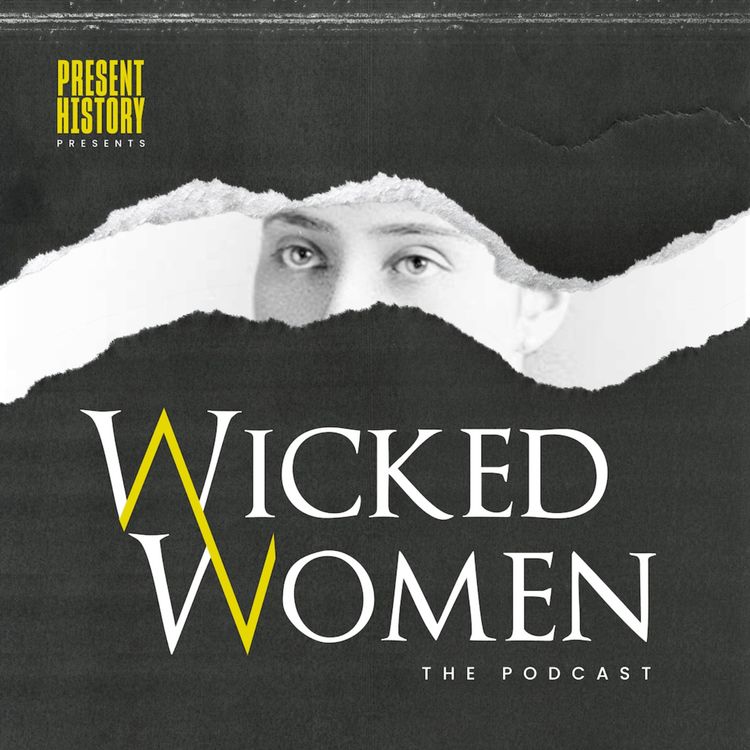Share

Wicked Women: The Podcast
Bonnie Parker
Perhaps some of the most recognizable American photos of the early 20th century. A young woman poses in front of a car with a cigar between her teeth and a gun on her hip. In another she points a rifle at the chest of a man who stares back at her without fear. Bonnie and Clyde made headlines in ways few couples have before or will again. There have been films, tv series, books, Broadway musicals, and even psychology terms based off of their story. But as is too often the case with media celebrities today, the real people behind the famous photos, hollywood films and power ballads are far more elusive. In addition, because of Clyde Barrow and Bonnie Parker’s fame as a couple, it can be difficult to see or imagine the individuals involved in the 21 month crime spree. Bonnie herself has been called a criminal, attention seeker, murderer, romantic, and a modern Robin Hood. Today she is far more of an American legend than a real flesh and blood woman.
Special Guest: Jenni Walsh, author of novels Becoming Bonnie and Side by Side that provide a raw look into the life of Bonnie and Clyde told in the voice of the woman who experienced it all.
Poem by Bonnie Parker read by Sallie Bieterman
More episodes
View all episodes

13. Women of the Criminal Underworld
43:41||Season 3, Ep. 13Bugsy Siegel, Al Capone, Machine Gun Kelly, Clyde Barrow…these are just a few of the most recognizable American gangsters, men who robbed, killed, racketeered, and launched themselves into legend. But what of the women who stood by these men’s sides and at times exceeded the men’s criminal abilities? In today’s episode, I will highlight several powerful women from the underworld: Kathryn Kelly, Bonnie Parker, Stephanie St. Clair, Virginia Hill, Geri Rosenthal, and Liz Renay. Joining me for a conversation is Lissa Rodgers, the author of the recent book "Shameless: Women of the Underworld" who will share insights about these remarkable women and more.
12. Women Who Kill
46:01||Season 3, Ep. 12Just in time for Halloween, an episode dedicated to discussing the lives and legacy of Britain’s female murderers.Women throughout history have been seen as the weaker sex both physically and emotionally. While women have been blamed for the fall of men since Eve in the Garden of Eden, their crimes usually centered around sexuality. When women murder, this breaks all the expectations of what women are capable of. Rage, violence, cunning, and vengeance are traits often prescribed to men. In the new world of women’s history, these women complicate the narrative by providing anything but a role model for future generations. But they still provide an essential part of human history. Continue listening as I am joined by Erin Fetterly, author of the recently published book Women Who Kill, as we discuss some of Britain’s most notorious female murderers. Intro music: Wicked Women Theme by Kieren Peatling and A Singular Perversion - Darkness by Kevin MacLeod
11. Margaret Tudor
01:09:23||Season 3, Ep. 11Margaret Tudor was the eldest daughter of King Henry VII and Queen Elizabeth of York and the elder sister of King Henry VIII. Margaret witnessed some of the most significant moments in her father’s later and her brother’s early reigns. A story filled with political intrigue, personal tragedy, and drama, Margaret has been largely left on the sidelines in later interpretations of Tudor history. Seen as insignificant at best and whiney and manipulative at worst, historian Linda Porter’s latest book, The Thistle and the Rose: The Extraordinary Life of Margaret Tudor looks to remedy that legacy and bring to light the truly remarkable life of Margaret Tudor. Keep listening to learn more. Featured guest: Historian and author Dr. Linda Porter Intro Music: Renaissance by Audionautix is licensed under Creative Commons Attribution 4.0.
10. Anne Bonny and Mary Read
48:24||Season 3, Ep. 10Pirates have been a part of the public imagination since ancient times, but what is known about the women who chose that life for themselves? In today’s episode, I will analyze pirates Anne Bonny and Mary Read, two women who have become more mythical than factual. Joining me today is historian Dr. Rebecca Simon, an expert on all things pirates and author of Pirate Queens: The Lives of Anne Bonny and Mary Read.
9. Hatshepsut and Neferura
35:26||Season 3, Ep. 9The name Hatshepsut has become synonymous with female power in ancient Egypt. But her daughter Neferura has been largely lost and forgotten. In today’s episode I will be speaking with Malayna Evans, author of the novel Neferura: The Pharaoh’s Daughter in which she tries to recapture the voice of Neferura and the turbulent world she lived in. Listen to my discussion with Malayna as we cover her book, the process of writing about women with very little records left behind, and female bodily autonomy. As Malayna Evan’s describes “Peace, it seems, never lasts for women who wield power in the open.“
8. Jezebel
45:02||Season 3, Ep. 8Jezebel has been a term used to demean, sexualize, and demonize women for millenia. But before it became a byword for “wicked women”, Jezebel was a queen of Israel who dared to worship different gods. She has been both erased, lost in a tide of scandal and rumor, and immortalized. In the end, perhaps becoming infamous was vindication for her villainization. In today's episode, I will be discussing the life and legacy of one of history's most influential “wicked women”, Jezebel. Joining me to discuss her triumphant novel Jezebel and the infamy of the woman behind the name is author Megan Barnard.
7. Mary Magdalene
33:57||Season 3, Ep. 7For anyone growing up in a Christian church, the name Mary Magdalene would be familiar. The first person recorded in the four Gospels to see Jesus after the resurrection, her true role as an apostle has been mainly lost over time, replaced by a persistent image of her as a penitent prostitute and sinner. In today’s episode, I will be in discussion with playwright Sylvia Milo, the mind behind the new play Magdalene: I am the Utterance of my Name.
6. Villains and Saints: Women’s Contradictions in History
50:49||Season 3, Ep. 6In today’s episode I will be in conversation with historian Emma Southon, author of the recently published A Rome of One’s Own: The Forgotten Women of the Roman Empire. In our conversation we will be looking specifically at the life of Tullia Minor and the woman she is most often depicted as a foil to, Lucretia. This discussion was an enlightening look into the lives of two Roman women as well as the wider concept of women’s agency and erasure throughout the past. I am excited for you all to listen to this one!